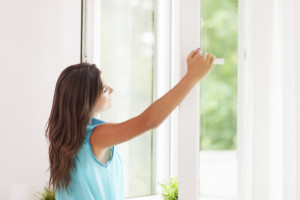
Mould and damp in homes is a result of high levels of indoor moisture. Homes with low internal moisture levels are easier to heat, and healthier and more comfortable to live in. While sources of internal moisture are varied, in some situations high moisture levels may arise from the things people do in their homes. This means that as a tenant, it may be possible to manage the indoor moisture levels in your rental property.
How do you know if internal moisture levels are high?
High indoor moisture levels are indicated by:
- mould growth on ceilings, walls and curtains
- condensation on windows
- musty or moisture-related indoor smells.
Why does internal moisture occur?
A number of household activities contribute significantly to high indoor moisture levels. The major sources of moisture generation include:
- cooking
- showering/bathing
- drying clothes indoors (either on a rack or a clothes dryer not vented to the outside)
- using an unflued gas heater.
Other (but lesser) sources of internal moisture include having indoor plants, open fish tanks or other indoor water features.
How can internal moisture be managed?
Ventilation is the key to managing moisture levels. Provide ventilation by opening windows and where possible, create as cross flow of air by opening windows on opposite sides of the building.
Open windows are a particularly effective form of ventilation in Wellington where the wind almost always blows. Wind passing an open window will draw indoor air (and the moisture contained in it) outside.
Specific actions to manage moisture levels in your home include:
- Open windows during the day. If security is an issue, ask for security stays to be fitted to windows.
- Open the bathroom window and close the door after showering or bathing to prevent the generated moisture moving through to other rooms.
- Use mechanical ventilation (range hood/extract fan) in both the kitchen and bathroom where they are provided.
- Do not dry clothes inside unless good cross ventilation is provided.
- Similarly, do not use a clothes dryer that is not vented to the exterior unless good cross ventilation is provided.
- Open curtains particularly on the sunny side of the building to provide daytime warming from the sun. Warm air can carry more moisture than colder air, which means more moisture will be removed from the building through ventilation.
By opening windows to provide ventilation and by avoiding high moisture-generating actions, you will find you home is easier to heat and more comfortable to live in.
Talk to us
If you have any questions about this subject or any of the other Nightingale Properties blogs, please feel free to call me on 029 200 3950 or email us at len@nightingales.net.nz.
